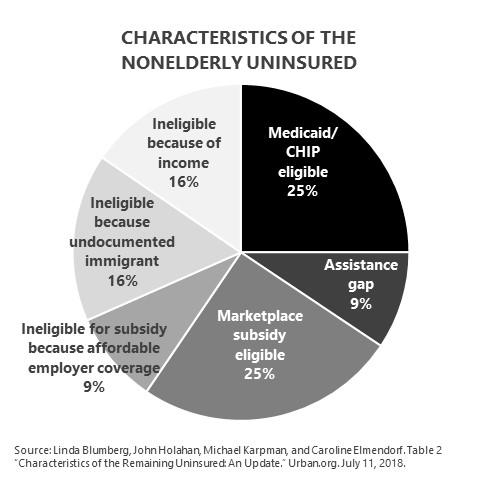A recent analysis by the Kaiser Family Foundation (KFF) warns that approximately 17 million additional Americans could lose health insurance coverage as a result of the proposed Big Beautiful Bill and other related policy changes. The report highlights significant concerns about shifts in federal health policy that may reverse gains made under the Affordable Care Act, leading to increased uninsured rates across the country. Experts caution that these developments could have far-reaching consequences for access to care and affordability, fueling a renewed debate over the future of the U.S. healthcare system.
Impact of Policy Shifts on Health Coverage Rates
The recent legislative changes, primarily driven by the Big Beautiful Bill and other related policy adjustments, are projected to drastically alter the landscape of health coverage in the United States. Analysis from KFF indicates that these shifts could result in approximately 17 million additional uninsured individuals by 2026. This spike stems largely from tightened eligibility requirements and reduced funding for premium subsidies, which have historically mitigated financial barriers for millions of Americans seeking health insurance.
Key factors contributing to this surge in uninsured rates include:
- Stricter income thresholds limiting access to subsidized health plans.
- Rollbacks on Medicaid expansion in certain states.
- Reduced outreach and enrollment support programs.
| Policy Change | Projected Uninsured Increase | Affected Population Segment |
|---|---|---|
| Premium Subsidy Reductions | 7 million | Low to middle-income families |
| Medicaid Rollbacks | 6 million | Low-income adults in expansion states |
| Enrollment Assistance Cuts | 4 million | Rural and underserved communities |
Detailed Analysis of the Big Beautiful Bill’s Role in Rising Uninsurance
The Big Beautiful Bill (BBB) has significantly influenced the increase in the uninsured population, with analysts pointing to several key provisions that effectively reduce coverage accessibility and affordability. The most impactful changes include the rollback of Medicaid expansion incentives and the reduction of premium subsidies under the Affordable Care Act, which together create substantial barriers for lower- and middle-income families. Experts highlight that these modifications disproportionately affect communities that were previously reliant on expanded Medicaid services, pushing many into a coverage gap that public and private insurance options fail to bridge.
Key factors driving the rise in uninsurance due to the BBB include:
- Cutbacks in Medicaid funding leading to state-level coverage reductions
- Lowered premium subsidies causing premium spikes in the individual insurance market
- Stricter eligibility criteria eliminating support for vulnerable populations
- Limited outreach and enrollment funding hampering access to available programs
| Policy Change | Estimated Increase in Uninsured (Millions) | Impact Area |
|---|---|---|
| Medicaid Expansion Rollback | 8.5 | Low-income populations |
| Reduction in Premium Subsidies | 6.2 | Middle-income families |
| Stricter Eligibility Requirements | 2.3 | Marginal populations |
Recommendations for Mitigating Coverage Loss and Expanding Access
To address the looming risk of millions losing insurance coverage, policymakers must prioritize expanding Medicaid in states yet to adopt it and enhance subsidies for marketplace plans. Strengthening outreach efforts that directly connect underserved communities with enrollment assistance can significantly reduce gaps, especially among racial and ethnic minorities disproportionately affected by policy shifts. Additionally, reinforcing protections for people with pre-existing conditions and stabilizing the individual market through risk corridor programs will help prevent further erosion of coverage.
Investment in innovative models such as community-based navigators and telehealth services also facilitates broader access, particularly in rural or economically distressed areas. The table below summarizes key recommended interventions and their projected impact:
| Policy Intervention | Target Group | Potential Coverage Gain |
|---|---|---|
| Medicaid Expansion | Low-income adults in non-expansion states | 6 million+ |
| Increased Marketplace Subsidies | Middle-income families | 4 million+ |
| Community Navigators & Outreach | Underserved minorities | 2 million+ |
| Telehealth Expansion | Rural populations | 1 million+ |
- Expand eligibility and simplify enrollment procedures to lower administrative barriers.
- Restore and increase funding for outreach programs that raise awareness about health coverage options.
- Strengthen marketplace stability through reinsurance and risk adjustment mechanisms that attract insurers.
In Summary
As policymakers continue to debate the future of healthcare in the United States, the potential loss of coverage for approximately 17 million individuals underscores the high stakes involved. The impacts of the Big Beautiful Bill and related policy changes could reverberate across the insurance landscape, affecting access, affordability, and health outcomes for millions. Observers and advocates alike will be closely watching how these developments unfold, as the nation grapples with ensuring coverage in an increasingly complex policy environment.
